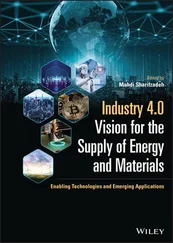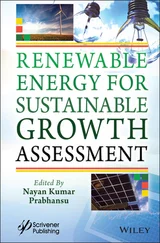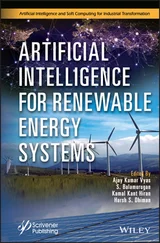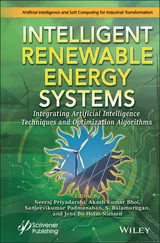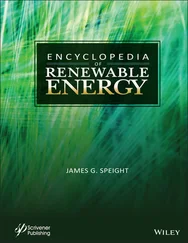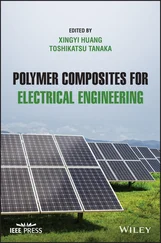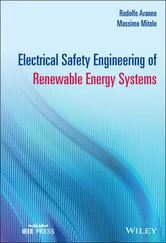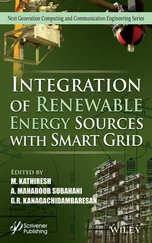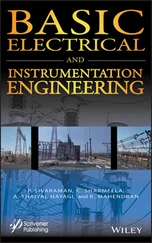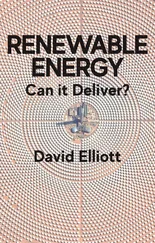1 Cover
2 Title Page Introduction to Energy, Renewable Energy, and Electrical Engineering Essentials for Engineering Science (STEM) Professionals and Students Ewald F. Fuchs University of ColoradoBoulder, CO, USA Heidi A. Fuchs Lawrence Berkeley National LaboratoryBerkeley, CA, USA
3 Copyright Page
4 Acknowledgments References
5 Summary Key Features
6 Preface P.1 Key Features P.2 The Climate Dilemma References
7 Glossary of Symbols, Abbreviations, and AcronymsA B C D E F G H I J K L M N O P Q R S T U V W X Y Z
8 About the Companion Website
9 1 Basic Concepts 1.1 Energy Conservation: Laws of Thermodynamics 1.2 Converting Heat to Mechanical Power 1.3 Heat Pumps and Air‐Conditioning Units 1.4 Hydro Turbines 1.5 Wind Power and the Lanchester–Betz–Joukowsky Limit 1.6 Thermal Solar and PV Plants 1.7 Capacity Factors 1.8 Force Calculations Based on Coulomb’s Law 1.9 Conductors, Insulators, and Semiconductors 1.10 Instantaneous Current i and Voltage v 1.11 The Question of Frequency: AC Versus DC Distribution and Transmission Systems 1.12 Reference Directions and Polarities of Voltages and Currents 1.13 Power p 1.14 Ideal Passive Electric Circuit Elements 1.15 Independent and Dependent Voltage and Current Sources 1.16 Galvanic Elements, Voltaic Series, and Lead–Acid Batteries 1.17 Electrolysis 1.18 Flow Batteries and Fuel Cells 1.19 Reformer 1.20 Energy Storage Plants 1.21 Current Projects and Issues with Potential Solutions 1.22 Software in Public Domain (e.g. PSPICE, Mathematica, MATLAB/Simulink) 1.23 Summary Problems References Appendix 1.A Design Data of Photovoltaic Power Plant of Figure E1.6.1 Appendix 1.B The Nature of Electricity and Its Manufacturing Appendix 1.C The Cost of Electricity in a Renewable Energy System
10 2 Electric Circuit Laws 2.1 Ohm's Law and Instantaneous Electric Power p ( t ) 2.2 Kirchhoff's Current and Voltage Laws (KCL) and (KVL), Respectively 2.3 Application of KVL to Single‐Loop Circuits 2.4 Single‐Node Pair Circuits 2.5 Resistor Combinations 2.6 Nodal Analysis 2.7 Loop or Mesh Analysis 2.8 Superposition 2.9 Source Exchange/Transformation 2.10 Thévenin's and Norton's Theorems 2.11 Wheatstone and Thomson Bridges 2.12 Summary Problems References
11 3 DC Circuit Transient Analysis 3.1 Capacitors 3.2 Inductors 3.3 Transient Analysis Applied to Circuits Resulting in First‐Order, Ordinary Differential Equations with Constant Coefficients 3.4 Transient Analysis Applied to Circuits Resulting in Second‐Order, Ordinary Differential Equations with Constant Coefficients 3.5 Summary Problems References
12 4 Alternating Current (AC) Steady‐State Analysis with Phasors 4.1 Sinusoidal and Cosinusoidal Functions 4.2 Sinusoidal/Cosinusoidal and Complex Number Relations 4.3 Phasor Relations for Circuit Elements such as Resistor, Inductor, and Capacitor Summary 4.4 Delta‐Wye Transformation 4.5 Solution Based on Kirchhoff’s Laws 4.6 Solution Using Nodal Analysis 4.7 Solution with Mesh and Loop Analysis by Applying Kirchhoff’s and Ohm’s Laws 4.8 Solution Based on Superposition 4.9 Solution with Source Transformation/Exchange 4.10 Solutions Employing Thévenin’s and Norton’s Theorems and Source Transformations 4.11 Nonsinusoidal Steady‐State Response 4.12 Summary Problems References Appendix 4.A Conversion of Phasors from Rectangular to Polar Form
13 5 Instantaneous and Steady‐State Power Analysis5.1 Introduction 5.2 Instantaneous Power p ( t ) 5.3 Average (Real) Power P 5.4 Relation Between Root‐Mean‐Square (rms) or Effective (eff) Value and Amplitude 5.5 Fundamental or Displacement Power Factor 5.6 Complex Power 5.7 Fundamental Power Factor Correction 5.8 Residential Single‐Phase AC Power Circuits in the United States 5.9 Three‐Phase Distribution and Transmission Networks 5.10 Summary Problems References
14 6 Coupled Magnetic Circuits, Single‐ and Three‐Phase Transformers6.1 Introduction 6.2 Magnetic Circuits 6.3 Magnetically Coupled Circuits, Definition of Self‐ and Mutual Inductances 6.4 Unsaturated or Linear Single‐Phase Transformer 6.5 Ideal Transformer 6.6 Applications of Single‐Phase Power Transformers 6.7 Three‐Phase Power Transformers 6.8 To Ground or Not to Ground? That Is the Question 6.9 Results Obtained Through More Accurate Calculation and Measurement Methods 6.10 Summary Problems References
15 7 Frequency Characteristics of Electric Circuits7.1 Introduction 7.2 Sinusoidal/Cosinusoidal Frequency Analysis 7.3 Passive Filters 7.4 Active Filters 7.5 Summary Problems References
16 8 Operational Amplifiers8.1 Introduction 8.2 Ideal Operational (OP) Amplifier 8.3 Noninverting OP Amplifier 8.4 Unity‐Gain OP Amplifier 8.5 Inverting OP Amplifier 8.6 Differential Amplifier 8.7 Summing Networks 8.8 Integrating and Differentiating Networks 8.9 Active Filters 8.10 Current‐to‐Voltage Converter 8.11 Controllers for Electric Circuits 8.12 Summary Problems References
17 9 Semiconductor Diodes and Switches 9.1 Introduction 9.2 The pn Junction: Elementary Building Block of Semiconductor Diodes and Switches 9.3 Zener Diode 9.4 Varistor 9.5 Bipolar Junction Transistor (BJT) 9.6 Metal–Oxide–Semiconductor Field‐Effect Transistor (MOSFET) 9.7 Thyristor (Current Gate) or Silicon‐Controlled Rectifier (SCR) 9.8 Triac 9.9 Insulated‐Gate Bipolar Transistor (IGBT) 9.10 Gate Turn‐Off Thyristor (GTO) 9.11 Summary References
18 10 Applications of Semiconductor Switches Using PSPICE: Uncontrolled and Controlled AC–DC Converters (Rectifiers), AC Voltage and Current Regulators and Controllers, and DC–AC Converters (Inverters) 10.1 Half‐Wave, Single‐Phase Rectification 10.2 Full‐Wave, Single‐Phase Rectification 10.3 AC Current Controllers 10.4 Clippers and Clampers 10.5 Three‐Phase Rectifiers 10.6 Three‐Phase Inverters 10.7 Design of a Photovoltaic (PV) Power Plant 10.8 Design of a Wind Power Plant 10.9 Efficiency Increase of Induction Motors Based on Semiconductor Controllers and Influence of Harmonics on Power System Components 10.10 Power Quality and the Use of Input and Output Filters for Rectifiers and Inverters 10.11 Summary Problems References
19 11 DC Machines Serving as Role Models for AC Rotating Machine Operation and Electronic Converters11.1 Introduction 11.2 Mechanical Commutation Concept 11.3 Equivalent Circuits and Voltage–Current Diagrams of Separately, Cumulatively, Differentially, Self‐Excited, and Series‐Connected DC Machines 11.4 Speed and Torque Control 11.5 Summary Problems References Appendix 11.A Magnetic Field Computation Based on Numerical Methods Appendix 11.B Sample Calculation of Self‐ and Leakage Inductances and Flux of a DC Machine Field Winding from Flux Plots
20 12 Permanent‐Magnet, Induction, and Synchronous Machines: Their Performance at Variable Speed and Torque 12.1 Revolving Magnetic Field 12.2 Permanent‐Magnet Materials 12.3 Designs of Permanent‐Magnet Machines (PMMs) 12.4 Three‐Phase (Polyphase) IMs: Balanced Operation 12.5 Polyphase Non‐salient and Salient Pole Synchronous Machines (SMs) 12.6 Summary Problems References
21 Index
22 End User License Agreement
1 Preface Table P.1 Greenhouse gases and their chemical formula, anthropogenic sources,...
2 Chapter 1 Table 1.1 Energy content of various fuels usable for transportation per gallo... Table E1.6.1 Daily average energy readings per week from 14 July 2014 to 14 J... Table 1.2 Voltaic series.Table P1.16.1 Daily average energy readings per week: 07/15/2015 through 07/1...Table P1.17.1 Daily average energy readings per week: 07/15/2016 through 07/1...
3 Chapter 3Table E3.1.1 PSPICE program.Table E3.2.1 PSPICE program.Table 3.1 Calculated values for Figure 3.13.Table 3.2 PSPICE program.Table 3.3 Calculated values for Figure 3.16.Table 3.4 PSPICE program.Table E3.4.1 Analytical solution points of Eq. (E3.4.22).Table E3.4.2 PSPICE program.Table E3.4.3 PSPICE program for calculation of Figure E3.4.4.
Читать дальше

